Will modern, air-conditioned, hi-tech schools have to recalibre their environment and practices to match old-world paathshala traditions? One week into restarting physical classes, educationists and urban designers admit, hell, yes!
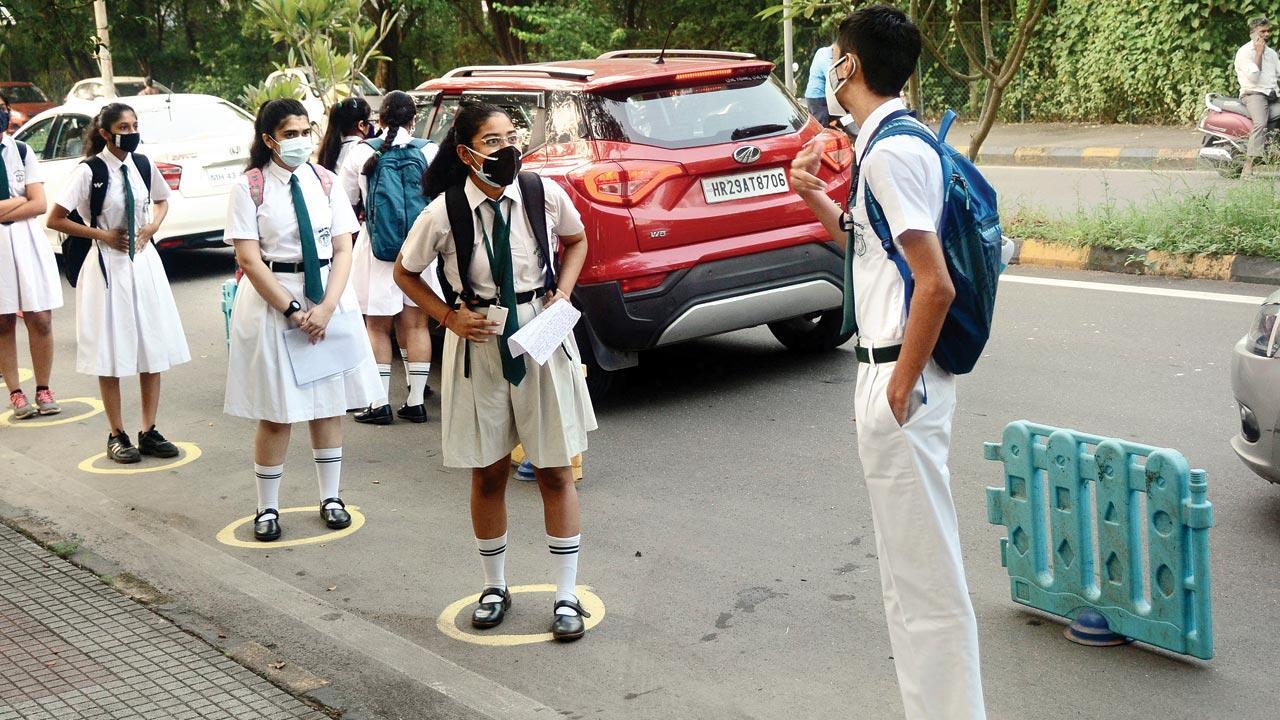
Students follow social distancing protocols at Delhi Public School, Nerul, which reopened this week, after over a year-and-a-half. Pic/Anurag Ahire
When schools reopened in the Downingtown Area School District in Chester County, Pennsylvania, after being closed in a Coronavirus-induced lockdown last year, Lakshmi Iyer, author and mother to three girls, remembers experiencing mixed emotions. But, her fears were quickly put to rest. The school, where her daughters study, opened in a phased manner from September 2020, and children with “extreme special needs” were among the first to return to the classroom. Iyer’s 12-year-old twins, who have moderate special needs, were called in by November last year, attending classes four days a week. The rules—stipulated by the Centers for Disease Control and Prevention and the local bodies—related to assigned seating, wearing the mask at all times, and maintaining hand hygiene were being followed strictly throughout.
ADVERTISEMENT
“These students made up just about 10 per cent of the total school population. So, they still had space to spread out within the classroom,” she tells mid-day in a telephonic interview. By March 2021, the school was opened to all its students, and her youngest daughter, who is seven, also went back to attending physical classes twice a week. For many parents, who had been juggling work and home duties during the pandemic, this came as a respite.
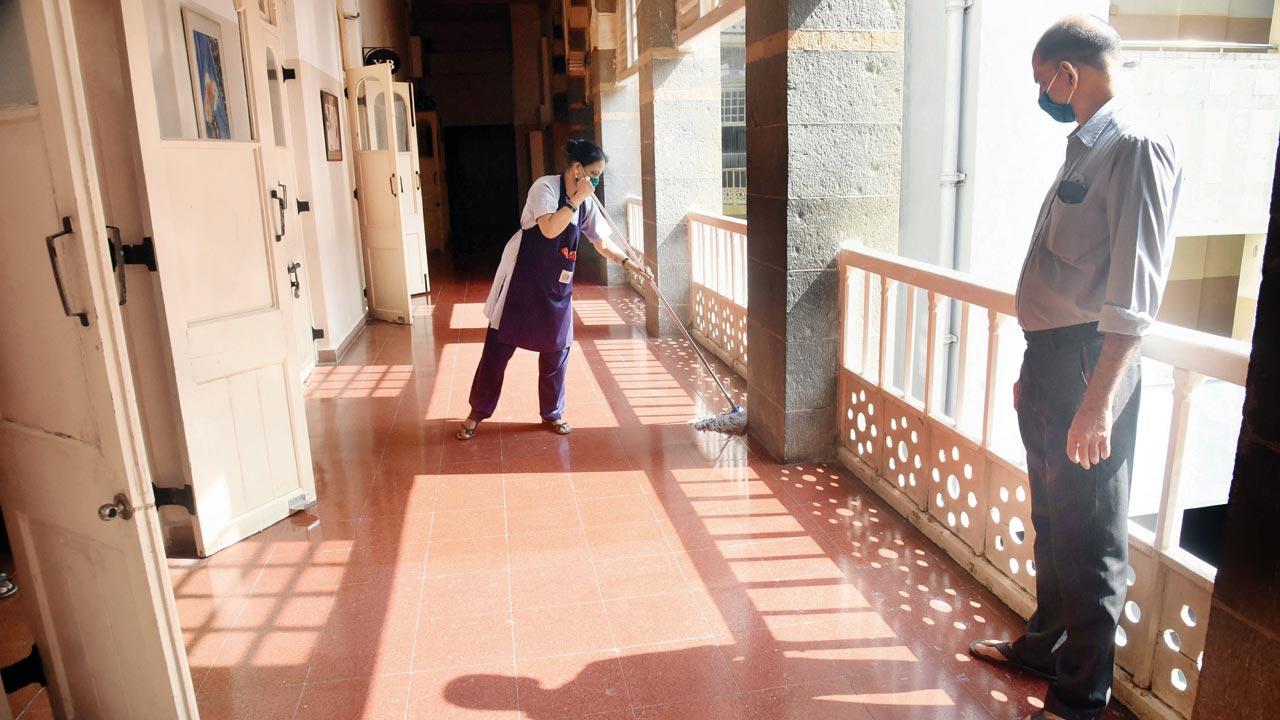 This school is housed in an old world structure with sunlit corridors and large windows. Urban designers say it’s this sort of building with biophilic design that’s most suited to fight the spread of infections. Pics/Sameer Markande
This school is housed in an old world structure with sunlit corridors and large windows. Urban designers say it’s this sort of building with biophilic design that’s most suited to fight the spread of infections. Pics/Sameer Markande
But the situation began to get complicated post June, when the Pfizer vaccine became available for kids aged 12 and above in the US. The anti-mask and anti-vax movement had also begun picking up simultaneously. “They [the anti-maskers] would come and disrupt school board meetings,” recalls Iyer. Several parents, including Iyer, resisted the attempt, voicing their concerns at every platform possible. The more contagious Delta variant, she says “flipped the switch”. “As per the guidelines, if there were mask-less kids in a classroom and a child tested positive, everyone would have to be quarantined. But, if all the kids wore masks, only those in close contact [within three feet distance in an indoor environment] of the COVID-19 positive student, would have to isolate.” The school, realising how challenging it was going to be to have entire classes quarantined, eventually decided in favour of the mask. This was perhaps the biggest win—despite being the most basic—for Iyer and other parents, in ensuring that the school was a safe space to send their kids to.
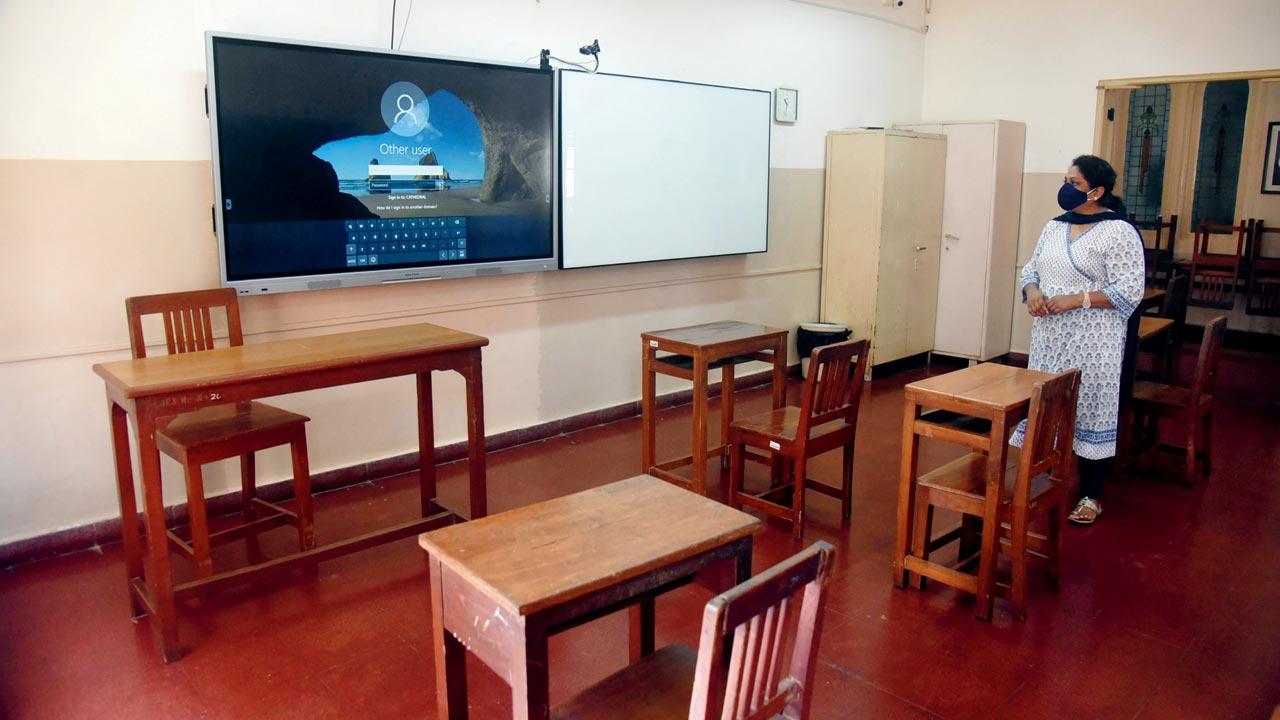 The Cathedral & John Connon School in Fort which opens to students on Monday after over a year, will hold a hybrid model of teaching, with the teacher instructing a few children in class, While guiding the rest at home via a video accessible on a large screen.
The Cathedral & John Connon School in Fort which opens to students on Monday after over a year, will hold a hybrid model of teaching, with the teacher instructing a few children in class, While guiding the rest at home via a video accessible on a large screen.
It has been around five weeks since her daughters’ school kick-started for the new academic year, and this time around, classes are on in full swing. “The school has adopted a new ventilation system to minimise the use of air conditioners. The water fountains to drink water from have been done away with. Instead, bottle-filling stations have been installed on the premises.” One of the more interesting initiatives undertaken has been to encourage classes in the outdoors, especially for subjects like phonetics, where observing the movement of the mouth is crucial to learning speech sounds. “Students cannot learn this with a mask on,” she says.
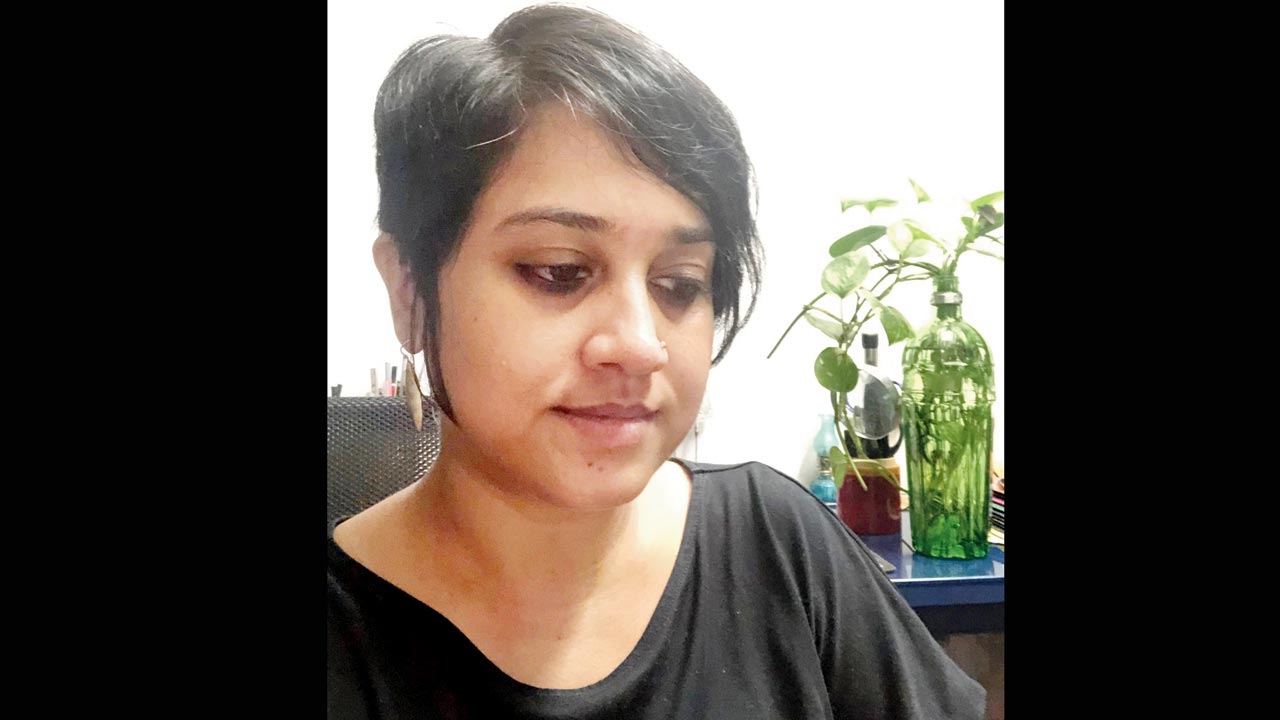 Rupali Gupte
Rupali Gupte
Closer home in Mumbai, classes for students of Classes VIII to XII have been on for a week. But, parents are still wary. As per mid-day’s October 8 report, though 75 per cent schools have reopened across the city, only 26 per cent students have returned to physical class. While the SOPs set by the state government and BMC include a roster of measures like zig-zag seating, shorter duration of classes, avoiding use of air conditioning, and separate entry and exit points for students, architects and urban planners feel that there’s a lot more that can be done to keep the environment student-friendly. Top on the list is reimagining school spaces.
 Lakshmi Iyer, whose three girls Anjali, Meghna and Sahana attend school at the Downingtown Area School District in Chester County, Pennsylvania, says she and other parents had to fight the anti-mask movement at school board meetings this year
Lakshmi Iyer, whose three girls Anjali, Meghna and Sahana attend school at the Downingtown Area School District in Chester County, Pennsylvania, says she and other parents had to fight the anti-mask movement at school board meetings this year
It was during the unprecedented year of COVID-19 that the authorities at Jamnabai Narsee School in Vile Parle, first realised the need for a school that looked and felt different. Following consultations with interior designers and architects, they decided to renovate the building keeping COVID-19-prevention measures in mind. This was the time, when the state government was still far from deciding on restarting classes. “The lockdown has been very hard on students, and their emotional and mental wellbeing continues to be a cause for concern,” says Zeenat Bhojaboy, principal. “So, from the very outset we knew that when they return to school, they should be welcomed into a new bright, well-lit and colourful space.”
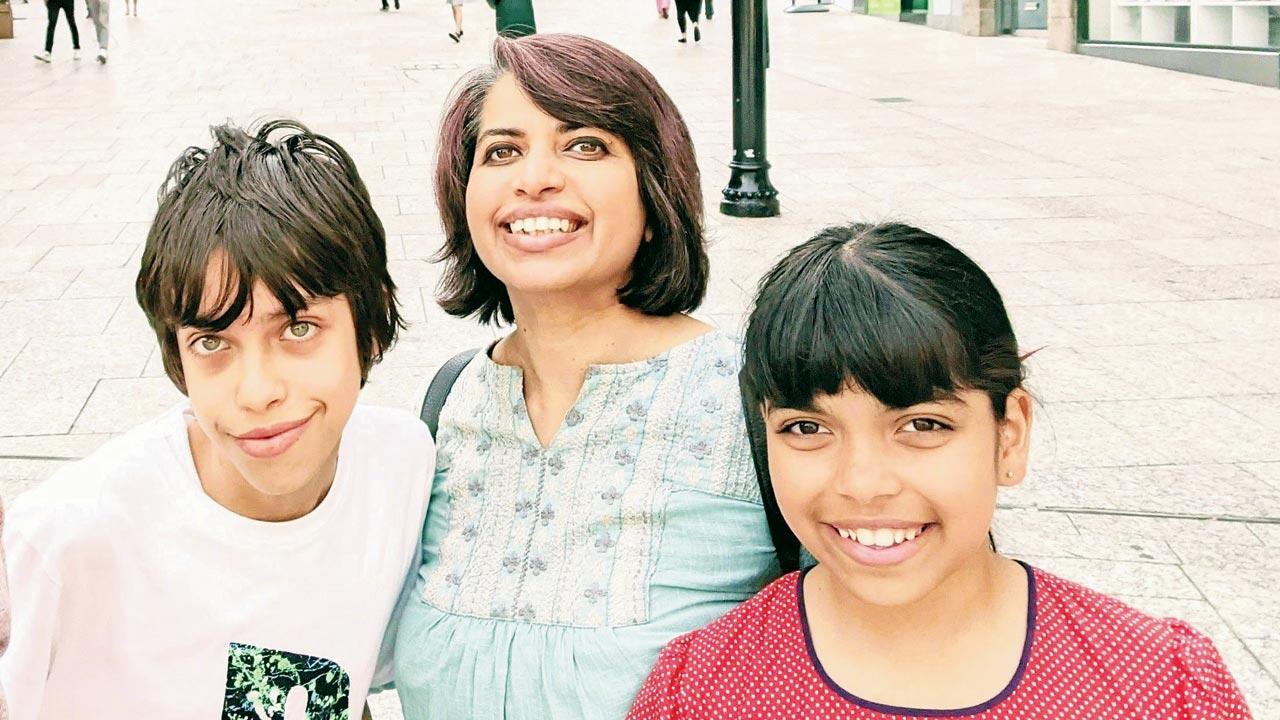 Shreya Sen Handley’s children who study at a school in Nottingham, were kept in a bubble, interacting with kids in pre-designated groups to prevent the risk of transmission of the virus
Shreya Sen Handley’s children who study at a school in Nottingham, were kept in a bubble, interacting with kids in pre-designated groups to prevent the risk of transmission of the virus
As part of the renovation, new large windows with grills and railings, were fitted in the classrooms and other common areas. “We wanted more sunlight entering the school. The idea was to improve ventilation too, so that students have access to fresh air through the day.” The washrooms got a fresh coat of paint—the standardised beige walls have now made way for maroon, yellow and pink. Walls on one of the larger corridors on the fourth floor, outside the art room and school hall, carries paintings of Indian musicians.
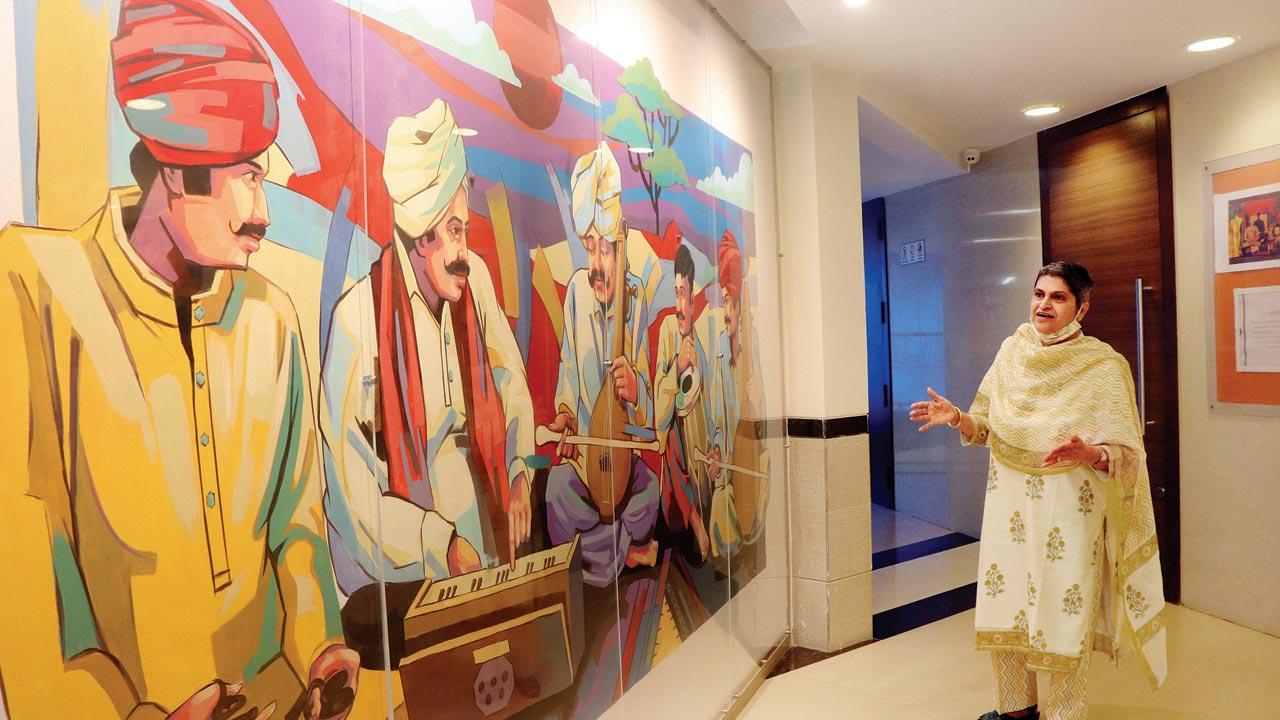 Zeenat Bhojaboy, principal, Jamnabai Narsee School, seen beside a wall showcasing a painting of Indian musicians. All the common areas have been repainted in bright colours to perk up the environment
Zeenat Bhojaboy, principal, Jamnabai Narsee School, seen beside a wall showcasing a painting of Indian musicians. All the common areas have been repainted in bright colours to perk up the environment
Since the school reopened on October 4, teachers have been attempting different seating arrangements within the classroom, while keeping social distancing protocols in mind. Common areas like the assembly hall, are also being converted into large classroom spaces. The idea is to provide a change of atmosphere, says Bhojaboy.
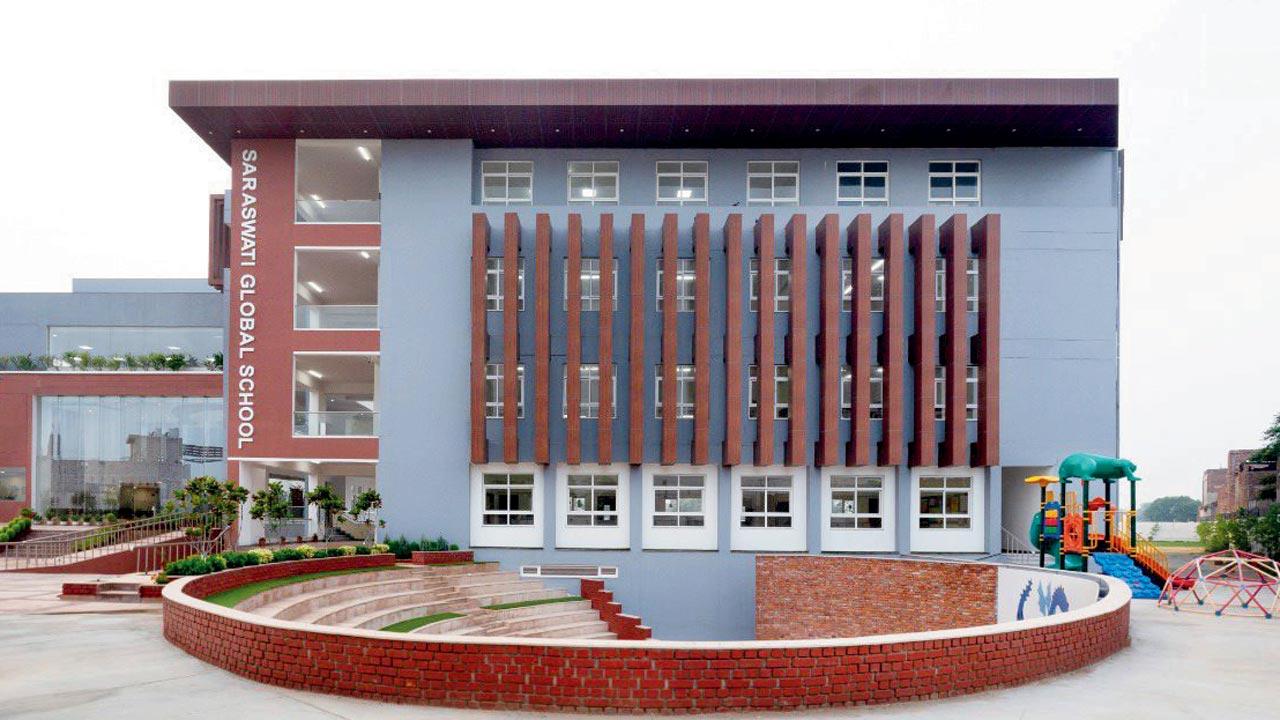 Meena Murthy Kakkar, whose architecture firm helmed the design of the Saraswati Global School in Faridabad, suggests constructing similar vertical fins on the building’s facade. The fins not only act as a sunshade, but also force air through narrower openings, increasing its speed, resulting in better ventilated internal spaces
Meena Murthy Kakkar, whose architecture firm helmed the design of the Saraswati Global School in Faridabad, suggests constructing similar vertical fins on the building’s facade. The fins not only act as a sunshade, but also force air through narrower openings, increasing its speed, resulting in better ventilated internal spaces
Meena Murthy Kakkar, design head and partner, Envisage, an interior and architecture firm that has helmed many institutional design projects, including for The Mann School (Delhi) and Saraswati Global School (Faridabad), says that over the last decade, most urban schools had moved away from the traditional idea of what a school represents. “They have become more introverted in their approach. With classrooms being air-conditioned, spaces are now closed, segmented and boxed up. This is being done in the name of making schools comfortable for children. But, from a health perspective, it is not the best move,” feels Gurugram-based Kakkar.
 Meena Murthy Kakkar
Meena Murthy Kakkar
She says that many schools are considering creating cubicles within classrooms to create physical distance between children, which defeats the very idea of group learning. The classrooms represent freedom and that doesn’t seem to be happening with the current set of ideas being mooted by local bodies. “The focus instead, should be on reusing, reassigning and reorganising existing spaces,” adds Kakkar. She suggests multipurpose use of classrooms, school compounds, terraces, and common areas. “What’s most important is getting more natural air into the building.”
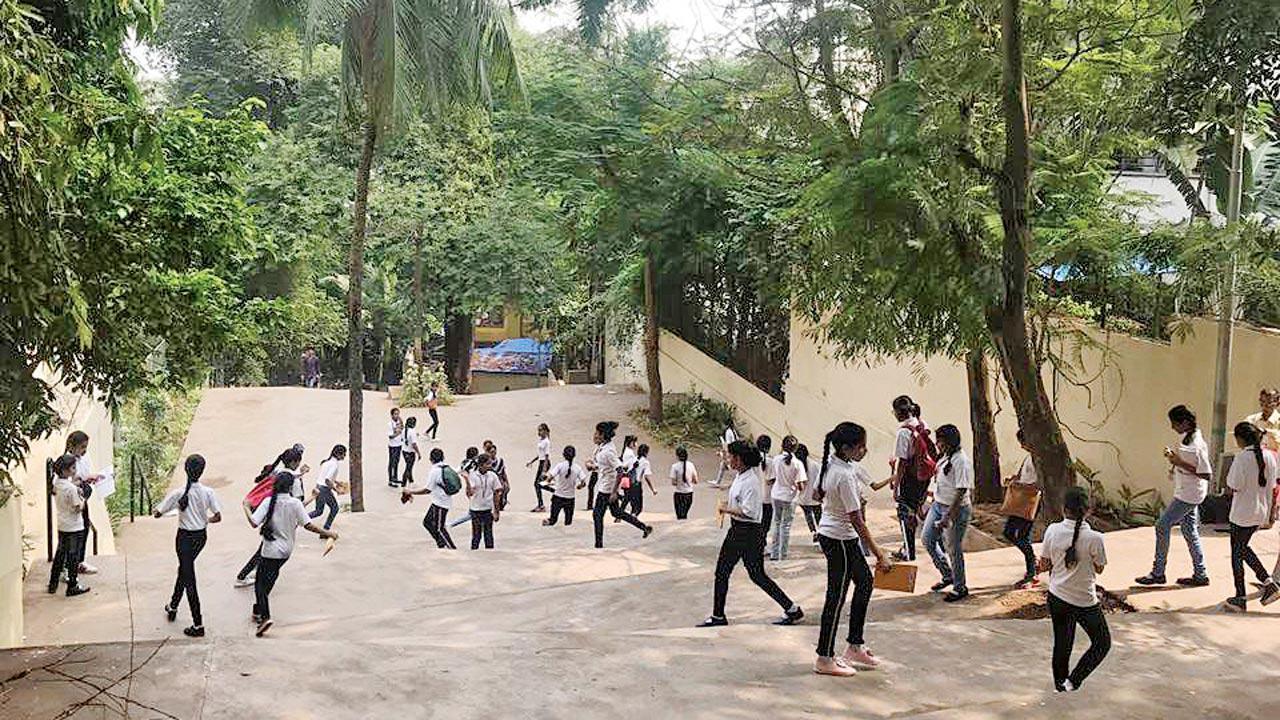 Anca Florescu Abraham says The Steps, opposite St Stephen’s Church in Bandra, has plenty of room for kids to explore and learn outdoors. She advocates the smart use of common public spaces by parents
Anca Florescu Abraham says The Steps, opposite St Stephen’s Church in Bandra, has plenty of room for kids to explore and learn outdoors. She advocates the smart use of common public spaces by parents
Mumbai-based Rahul Kadri, partner and principal architect, IMK Architects, agrees. “Everything really comes down to the basics,” he says, adding that retrofitting existing structures to improve ventilation should be on top of every school’s priority list. “To start with it, increase the size of the existing windows from the floor to the beam, and have more of them within the premises,” he says. “There has been a trend to have sliding windows in class. But, with sliding shutters you can only have 50 per cent of the window open [at any given point in time]. The better option would be to have old-fashioned casement windows that open completely. You can have grills [to keep it child-proof].”
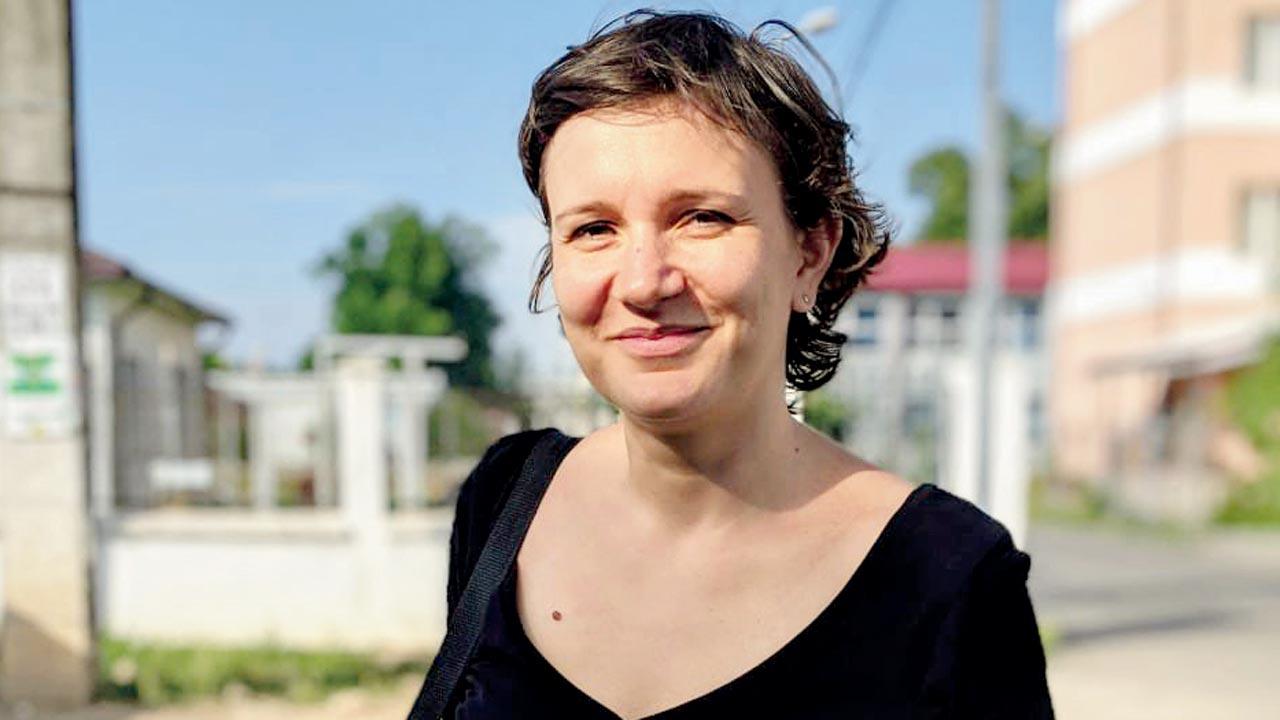 Anca Florescu Abraham
Anca Florescu Abraham
According to Kakkar, natural disinfection is the best means to counter highly-infectious diseases. This can be achieved by adopting principles of biophilic design, which is basically increasing a building occupant’s connectivity to the natural environment. “Start with improving the plant cover within the school premises. If classrooms have balconies [or windows with ledges], create personal gardens with air-purifying plants. This ensures that the air that comes in, is naturally purified, improving the air quality within classrooms.”
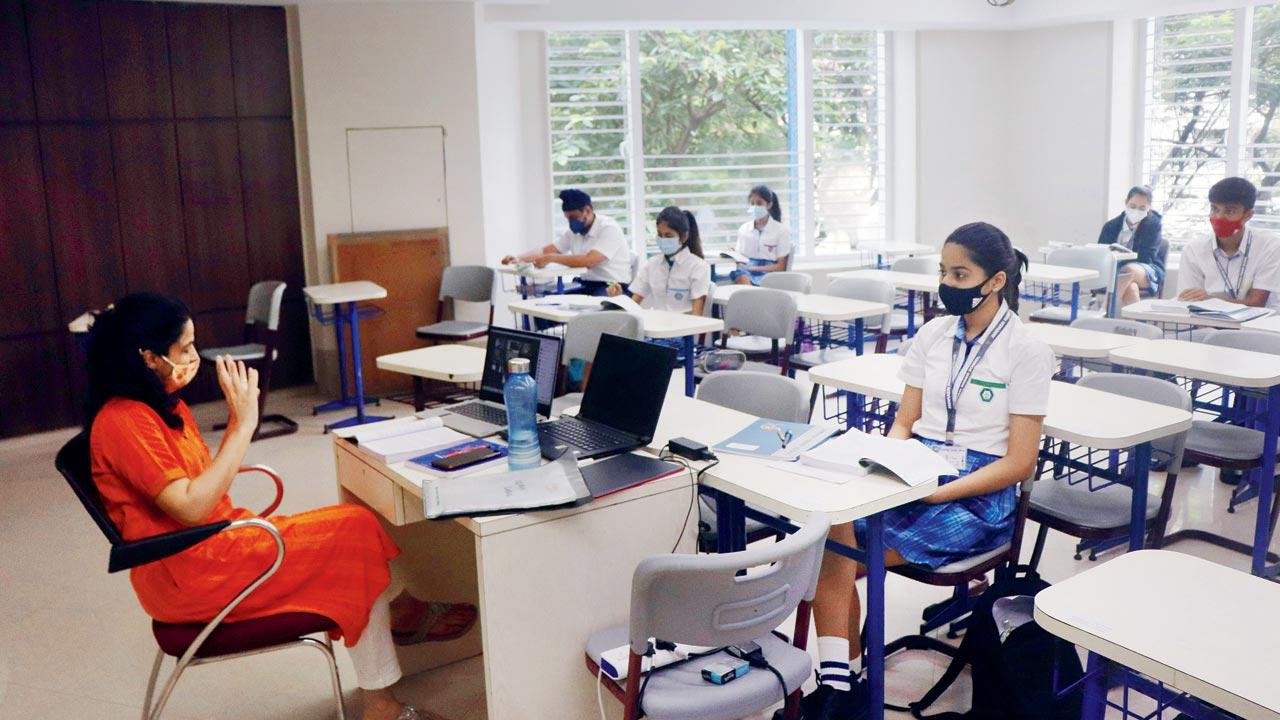 Jamnabai Narsee School, Vile Parle, installed large windows in the classrooms and other common areas, when the building was renovated last year. This was done to ensure that more natural light entered the school. Pics/Anurag Ahire
Jamnabai Narsee School, Vile Parle, installed large windows in the classrooms and other common areas, when the building was renovated last year. This was done to ensure that more natural light entered the school. Pics/Anurag Ahire
She also suggests constructing vertical fins or shades on the building’s facade. “These vertical fins have two functions. One is to act as a sunshade. And the second is to help channelise the air into the classroom. The fins force air through narrower openings, increasing their speed, resulting in better ventilated internal spaces,” says Kakkar.
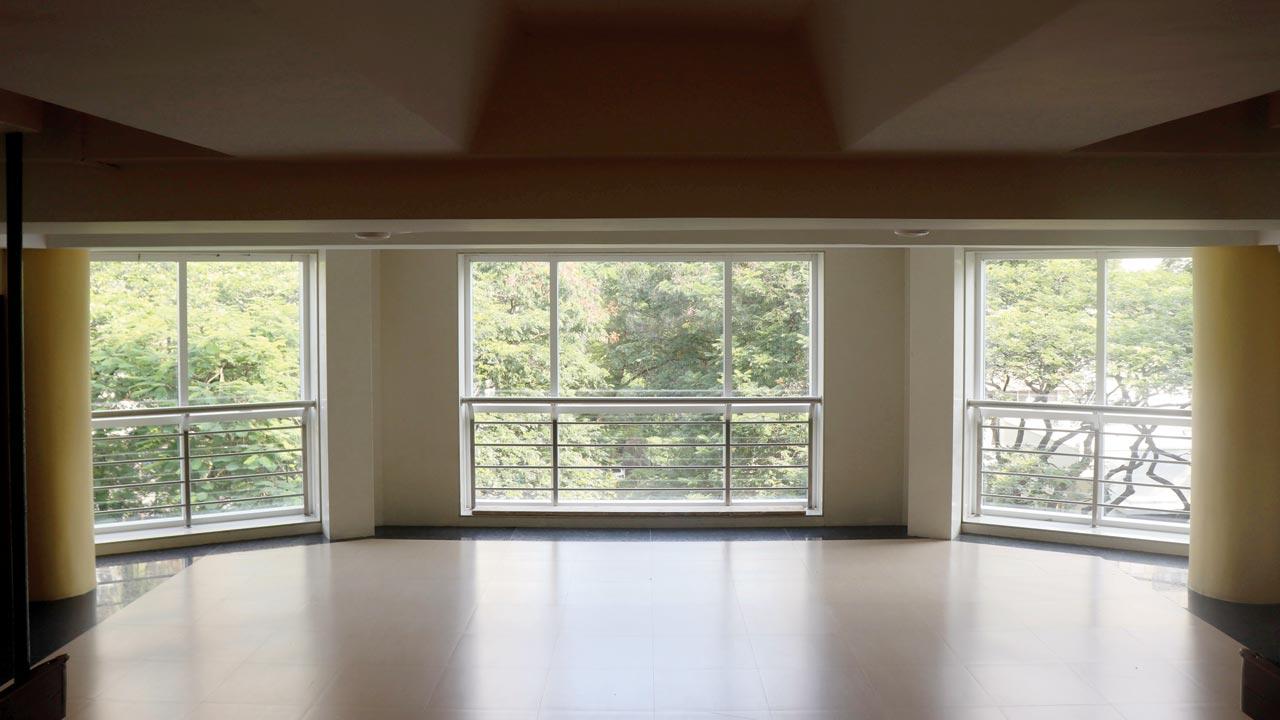
Nottingham-based author Shreya Sen Handley’s children started school in the thick of the pandemic earlier this year. “At first, it didn’t seem like the right decision. Even though COVID-19 appears to have affected children less, there have been deaths and no one yet knows of the long-term impact of the contagion on children who have contracted it. Most schoolchildren have already had it by now,” says Handley.
Since maintaining social distancing is not possible all the time, students are now kept in bubbles. “The bubble comprises a group of children who study, play and eat together at school. It could be the whole class or broken down into smaller groups like forms [similar to the school house system] within the same year. They are not allowed to play, eat or study with children outside this group, thus limiting transmission of the virus. It functions like a self-contained group, which mixes freely, but only amongst themselves, and has access to the same areas in school, which is again portioned out or scheduled for use for a bubble or limited number of bubbles at a time.” If a child picks up the infection, everyone around them is also sent home for two weeks. “My children had to do spells of isolation at home as well, as they were exposed again and again, but were fortunate not to contract the virus. It has been a nerve-racking time for all parents here,” says Handley.
The truth, say urban designers, is that the pandemic won’t be leaving us for a while, and so, the need of the hour is to make the school-going experience less burdensome and traumatic for both, students and parents.
Meera Isaacs, principal of The Cathedral & John Connon School at Fort, which will resume classes for the IB students this week, says they carried out a survey among their students, before planning to reopen. “A lot of students want to return to school, while there are a few, who would still prefer online schooling. We have given that option to them, as we are employing a hybrid form of teaching for now.” The teachers, all of whom have been vaccinated, were trained during the past one week, to help kids once they return. Isaacs says that apart from following SOPs by the government, they’ve reached out to schools in Hong Kong, to understand the best safe practices that can be implemented. “We’ve pinned up colourful posters everywhere, and floor signs to remind them to continue following COVID-19 protocol. We have also removed all the extra desks in the classrooms, so that they are less crowded. And where we initially accommodated 40 kids in a class, we will now only have about 18 students. If there are extra students, they will be kept in another classroom,” says Isaacs. According to Kadri, every child should have a space of at least three to four sqft to negotiate within a classroom.
Rupali Gupte, professor and co-trustee of the School of Environment and Architecture, Borivli, and partner of architecture firm Bard Studio, says that right now, there is a need to “rethink pedagogy”. “This closed, classroom-based experience is very removed from life-based experience. Schools these days are nothing, but spaces for disciplining children.” She instead feels that school grounds and basketball courts could be opened up to students, and can become new centres of learning. “We need more fluid spaces, which are intimate and encourage conversation, and at the same time, allow for social distancing.”
Using open spaces is also at the heart of what LYPMumbai has been advocating. The community organisation curates unique experiences in Mumbai’s public spaces. During the second lockdown in April 2021, they also led a petition, demanding the opening of parks and open spaces, especially for children. At present, while public parks have opened, schools are not permitted to allow children to access grounds or courts within their premises; any kind of assembly has also been discouraged.
Anca Florescu Abraham, co-founder LYPMumbai and Bombay Greenway, feels that this SOP should have been thought through by the local authorities. “It’s a no-brainer, actually. There’s enough scientific evidence available to show that indoor spaces are more risky than outdoors,” she says, adding, “We should take a leaf out of outdoor schools, which are quite popular abroad. There is so much to learn from the environment and the scope is limitless. You can teach biology, geography, math outdoors… It ensures holistic learning.” Abraham says that where most Mumbai schools don’t have the luxury of open spaces, it would be a good idea to make use of local parks in the neighbourhood. “If done in smaller groups and with dedicated teachers, this can easily be made possible.”
Abraham cities the example of The Steps opposite St Stephen’s Church in Bandra. The multi-use space designed by Bombay Greenway and Abraham John Architects, she says, has plenty of room for kids to explore and learn outdoors. “I know children who have not stepped out of their homes since the pandemic broke out. We need to be sensitive to what they have experienced. Making them sit with a mask on, inside a classroom for four to eight hours a day, is not the solution. We have to find ways to keep them active, and increase their productivity. Or else, we will be staring at another kind of epidemic.”
 Subscribe today by clicking the link and stay updated with the latest news!" Click here!
Subscribe today by clicking the link and stay updated with the latest news!" Click here!












